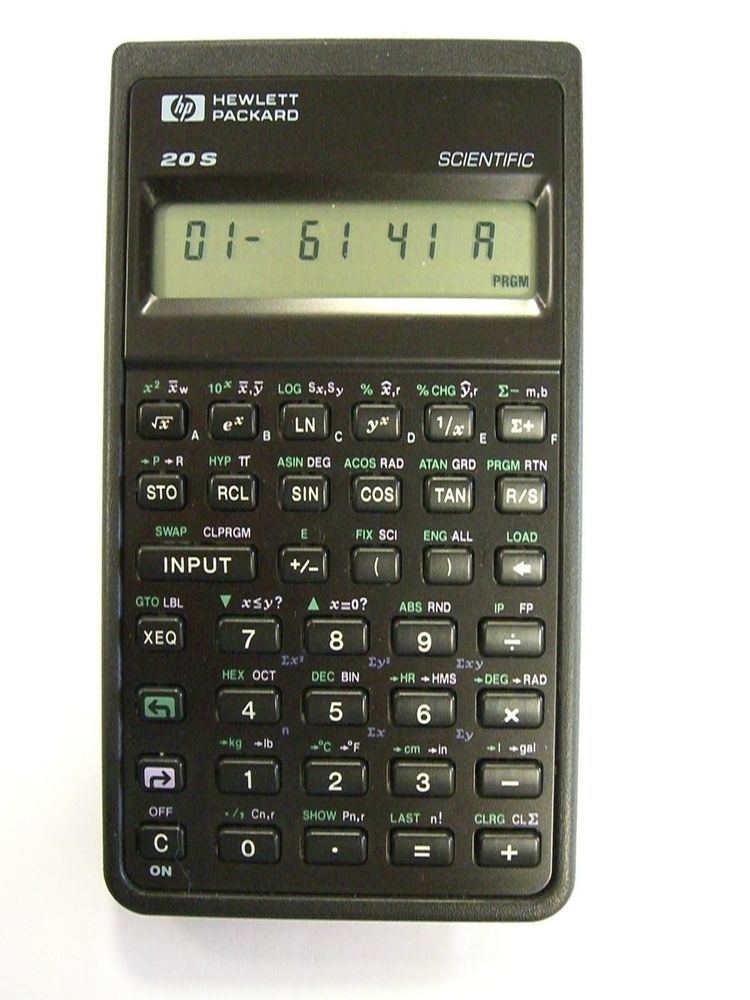The HP-20S (F1890A) is an algebraic programmable, member of Pioneer series of HP calculators produced from 1988 to 2003. It is similar to HP-21S. It has ninety-nine steps of fully merged program and ten memory registers.
There are six libraries in the ROM, which could be loaded to RAM and used and edited as user programs.
A- [ROOT] finder, finds a root of f(x)=0B- [INT] integral, calculates definite integral using Simpson methodC- [CPL] complex numbers manipulationsD- [3 by 3] matrix manipulations and line equations solverE- [qUAD] quadratic equation solverF- [fit] curve fitting, using exponential, logarithmic and power functionsThe HP-20S is not a clean design. It shares the quirks with its close relative, HP-21S. Some of them are:
INPUT and SWAP keys, which are awkward and not clear solution to mimic RPN functionality.Absence of "x<y" test, which enforces using two tests with additional labels and GOTOs in programs which need this functionality.A real bug is "x<=y" test. First of all, its name is misleading. Really, it is "x>=y" test in terms of RPN calculators. The manual says that x is 'hidden' while y is 'visible'. But yx power key on the calculator's keyboards functions in the traditional fashion of other HP RPN calculators. The second problem here is due to algebraic design: in order to separate two arguments of a test should the user divide them either with arithmetic operation or INPUT. If using arithmetic, like:the display shows the "pend" indicator, since calculator sees a pending addition operator. After the program stops, the user can press "=" sign and get the result of pending operation. If the user uses INPUT instead of arithmetic operation, the calculator will display the ":" indicator. In order to hide this effect, the user should place "C" clear command somewhere before program end.
Nevertheless, HP-20S is a functional and fast calculator, with very good LCD, keyboard, look, and feel. It uses the normal infix notation rather than RPN, which most HP scientific calculators use.

